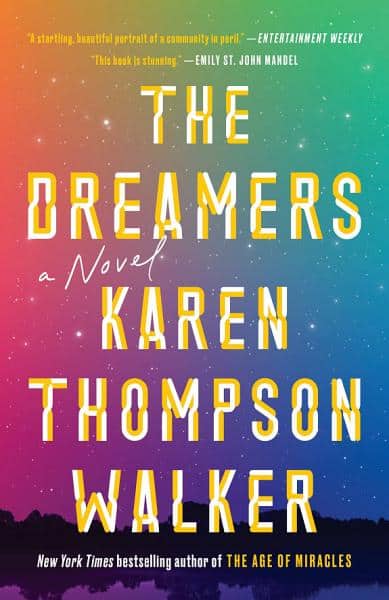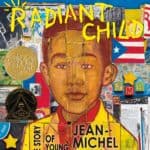
17
Sep2020 – A Year of Wonder
 After the library closed in mid-March due to the Coronavirus, and when we were still in some disbelief of what was happening to life as we knew it, I immediately reached for my copy of Year of Wonders by Geraldine Brooks. Published in 2001, it became one of my all-time favorite books. As I thumbed through the pages and thought about it and other books about plagues and disease and death, I outlined a column that I had due at the end of April.
After the library closed in mid-March due to the Coronavirus, and when we were still in some disbelief of what was happening to life as we knew it, I immediately reached for my copy of Year of Wonders by Geraldine Brooks. Published in 2001, it became one of my all-time favorite books. As I thumbed through the pages and thought about it and other books about plagues and disease and death, I outlined a column that I had due at the end of April.
April was not a particularly emotionally healthy time for me. I missed my place in the library. I was energized only in fits and starts; I had seemingly comatose times when I merely stared into space. I couldn't watch the news. My attention span didn't allow for movies, series, or podcasts, let alone books. I rarely knit but nervously surfed the Internet watching COVID-19s numbers climb around the world.
Working remotely, my husband and I navigated our home office spaces and our life as a couple. I baked bread and roasted chicken, while at the same time leading the library staff in daily (and sometimes hourly) Zoom meetings. I texted and called, preferring a personal touch. I updated the trustees and town managers via emails. Those missives barely spoke of the loss I was experiencing, communication that belied a deep and profound grief for my place of work, my co-workers, and my normal life. The only time I felt energized and happy were Tuesdays spent in my office in a cavernous, nearly empty library.
April was not the time for a column on a book about sickness and death. I abandoned the topic and wrote about the wonders of the library's virtual offerings. The staff had performed miracles from the days before we closed through March through May. We hoped to reopen, but we prepared to remain closed. It was a confusing, slightly schizophrenic time.
In the months that followed, I mused about other novels of plagues that I'd read years ago: Stephen King's The Stand, and Albert Camus' The Plague. I knew there would be another time when I could consider writing about these novels in my column.
Stephen King's The Stand is a giant book – both figuratively and literally. The original I read was around 800 pages.* As a post-apocalyptic fantasy, it isn't a genre that I currently read. However, in the late 70s, I remember being intrigued, committed, and addicted to it. The story (or multiples of storylines) was initially set in 1980. King's novel follows numerous characters who are survivors of a pandemic.
The US government developed a weaponized version of the flu, and its accidental release threatens the entire world's population. The fatality rate is 99.4% within one month. Small groups of survivors from various parts of the country form coalitions and new societies that confront each other. Scenes take place in Vermont, Colorado, Nevada, Nebraska, and Maine. *Later, in 1990, King released the uncut version that was 1100 pages. I have one of those mass-market copies, a carry-over from when I distributed free copies as part of World Book Night in April of 2012.
There are survivors, and King's dark book ends with some hope in the first version. Hope is doubted in the extended version when crazy Randall Flagg survives an atomic blast. Interestingly, a second miniseries (the first was in 1994) completed production in March 2020 at the beginning of COVID-19 and will be aired this December. Whoopi Goldberg is cast as 108-year old Mother Abagail. Alexander Skarsgård plays Randall Flagg.
Albert Camus' The Plague (1947) is usually required high school or college reading. At 300+ pages, The Plague is definitively shorter than The Stand. What it lacks in length, however, it is abundant in meaning. Camus' plague has a double meaning – both the pandemic that ravages the port city of Oran, Algeria, and the rise of Nazi Germany and the suffering that was unleashed as World War II. Camus' The Plague has many parallels in the Coronavirus pandemic, and it is an eerie read in 2020.
The epidemic is denied as a hoax. Shortages and hardships are endured. Death is rampant. The inhabitants of Oran are quarantined for a year, emerging at the end, frightful and relieved at the same time. However, unlike COVID-19, the outbreak is contained to Oran. In fact, Camus' premise is that by working together, cooperation is achieved.
"What's natural is the microbe. All the rest — health, integrity, purity (if you like) — is a product of the human will, of a vigilance that must never falter. The good man, the man who infects hardly anyone, is the man who has the fewest lapses of attention." Albert Camus in The Plague.
In Geraldine Brooks' Year of Wonders, a similar tragedy struck an English town in the 17th Century. War correspondent and Pulitzer Prize-winning author, Brooks, visited the small English village of Eyam. While there, she was intrigued about a sign designating it Plague Village and learned the plague arrived in the countryside in 1665. After suffering a multitude of quick and sudden deaths, the village's residents agreed to self-quarantine for 14 months so as not to spread the virus. With little written record to go on, Brooks crafted a historical novel centered on one line in one of the village rector's letters. Her book is the intriguing story of how one bolt of fabric brought the bubonic plague and the horrors of death and desperation to the mostly illiterate English town.
In doing some research for my column this week, I found that NPR wrote a piece on April 20, 2020, titled "A Matter of Common Decency: What Literature Can Teach Us About Epidemics." Not surprisingly, the article included both Year of Wonders and Camus' The Plague. It also included a book I have not read. It is a science fiction work and was published just one year before our experience with COVID-19 began. By Karen Thompson Walker, The Dreamers is the story of an ominous sleeping sickness that sweeps over a fictional town in Southern California. While the book focuses on the psychological realism of the dreams of its victims (one sleeping a year through an entire pregnancy), there are prescient parallels to our own pandemic experience. The virus is airborne. A community is quarantined. Masks are in short supply. Perhaps most visionary of all is the description of one of the ways the virus travels from person to person. Before the town is locked down, one last wedding is held. The bride has the first signs of being ill:
"Whoever shares her lipstick that day, whoever borrows her eyeliner, whoever kisses her cheek that night or dances too close or clinks her flute of champagne, whoever touches her hand to admire the ring, whoever catches the bouquet at the end of the night — all of them, every one, is exposed. This is how the sickness travels best: through all the same channels as do fondness and friendship and love." Karen Thompson Walker in The Dreamers
Our library has these books in print and digital versions. They all have messages that we need to hear in these difficult times.
"Here we are, alive, and you and I will have to make it what we can."
Geraldine Brooks in Year of Wonders.
Charlotte Canelli is the Director of the Morrill Memorial Library in Norwood, MA. Look for her article in the September 17, 2020 issue of the Transcript and Bulletin.
Site Admin
Search the Website
Library Hours:
- Monday – Thursday: 9:00am – 9:00pm
- Friday: 10:00am – 5:00pm
- Saturday: 9:00am - 5:00pm
- Sunday: 1:00pm -5:00pm








